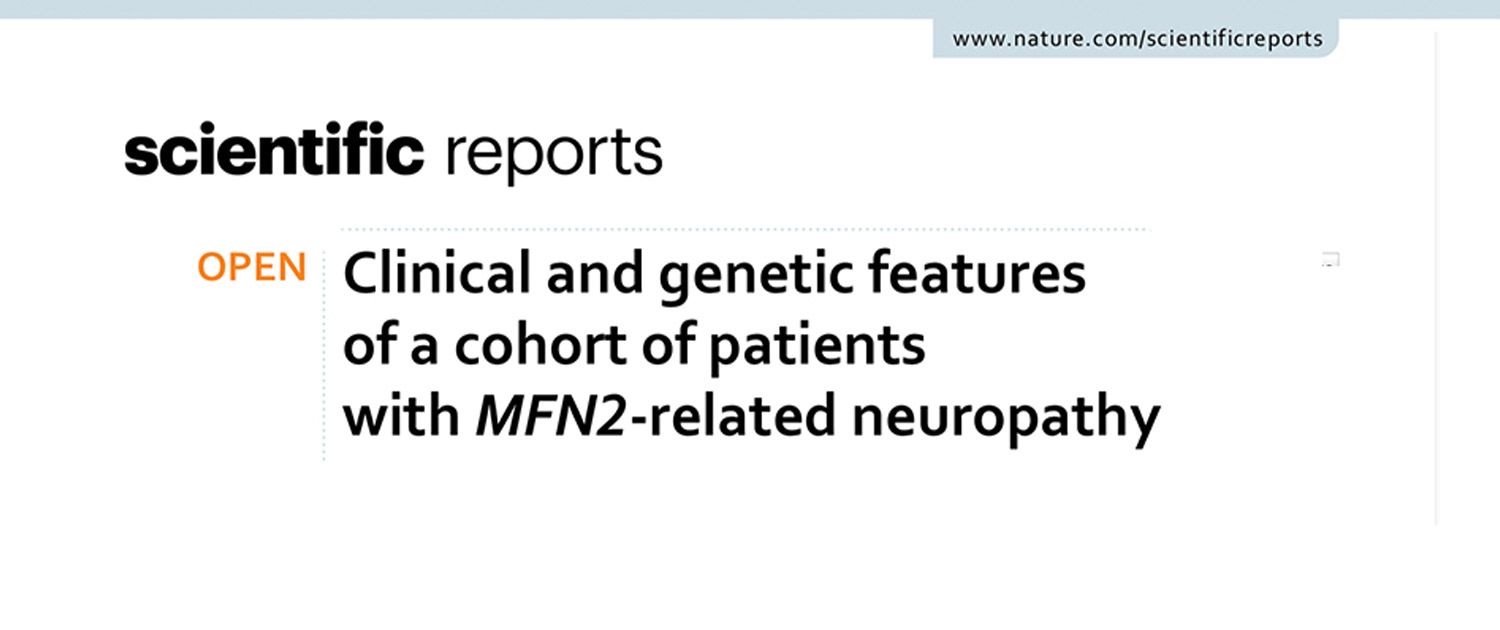New important article by our Scientific Committee published on Scientific Reports
18 May 2022
Inside the Dino Ferrari Center/University of Milan, where our Scientific Committee is based, research never stops. Thanks to the contribution of our association, so thanks also to all of you who are supporting us, it has been possible to carry out a new scientific study and, through that, identifying a new mutation (in the Mitofusin 2 gene) responsible for a severe Charcot Marie Tooth phenotype.
Another important milestone towards a therapy, which can only be achieved through a full understanding of our pathology, has been taken. Many thanks to our researchers for their excellent daily work and also to you who support us.
The study was published in the authoritative Scientific Reports. Congratulations to Dr. Elena Abati, first author of the article, and to the whole research group led by Prof. Comi and Prof Corti.
Below the press release issued by Centro Dino Ferrari/University of Milan.
CMT2A: identification of a novel patogenic mutation in the MFN2 gene in a cohort of patients with Charcot-Marie-Tooth type 2 A
A recent study characterized at a clinical and genetic level a cohort of 13-patients diagnosed with Charcot-Marie-Tooth di tipo 2A (CMT2A). This study has been published in the journal Scientific Reports with the title “Clinical and genetic features of a cohort of patients with MFN2-related neuropathy”. It has been conducted by two young researchers, Dr. Elena Abati and Dr. Arianna Manini, of the team led byProf. Nereo Bresolin, Prof. Giacomo Comi and Prof. Stefania Corti of the “Dino Ferrari Centre” (Universityof Milan, Fondazione IRCCS Ca’ Granda Ospedale Maggiore Policlinico),in collaboration with Prof. Emilia Belloneof the University of Genua and with Dr. Maria Grazia D’Angelo and Dr. Maria Teresa Bassiof the IRCCS E. Medea,BosisioParini.
CMT2A is a rare congenital neuromuscular disease caused by autosomal dominant mutations within the sequence of the Mitofusin 2 (MFN2) gene. CMT2A is characterized by a sensori-motor axonal neuropathy of variable severity, butit may also cause a wide spectrum of different symptoms.
In the work of Dr. Abati and Dr. Manini, patients presented a variable age of onset and phenotype, with a prevalence of severe forms. Many patients also showed additional symptoms, such as optic neuropathy and reduced visual acuity, sensorineural deafness, dysphagia and/or dysarthria, and neurocognitive abnormalities. Important is the observation of epileptic manifestations in two patients, as epileptic symptoms in CMT2A have been described in literature only once before the publication of this work.
Moreover, one of the patients carried a novel patogenic mutation within the MFN2 gene, the variant p.K357E. The patient carrying this variant shows a severe phenotype, with profound involvement of limb and respiratory muscles.
Thus, this scientific work expands our knowledge regarding the clinical and genetic spectrum of CMT2A, making it easier for clinicians to recognize and diagnose this devastating disease.
This project was supported by the “Associazione Amici del Centro Dino Ferrari” and “Progetto Mitofusina 2 onlus”.
You can read the complete article here: https://www.nature.com/articles/s41598-022-10220-0




